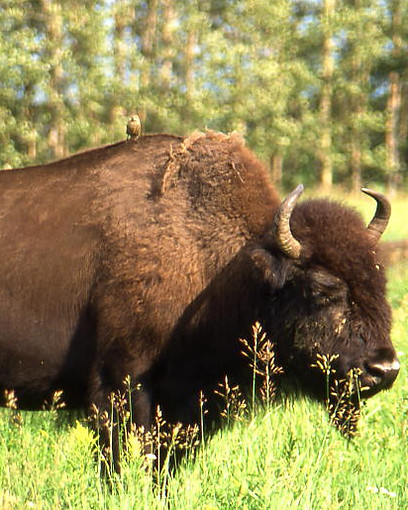

Get to know
The Bison Drive
Radio Station:
Tune into AM1610 for Bison Drive Information
The American Plains Bison
The American plains bison is back from the brink-but what will the future bring? Today, most live on ranches as livestock. Many herds have cattle genetics from early breeding experiments. The Minnesota Bison Conservation Herd is different. Here we protect the prairie that bison depend on. The Minnesota Department of Natural resources and the Minnesota Zoo work to restore bison without cattle genetics for future generations.
Park Hours:
Daily 8am - 10pm

At a Glance
-
Please maintain a safe viewing distance of 25 yards (1/4 of a football field). Remember they are a powerful animal that can run much faster than you can (at least 30 miles per hour)!
-
Currently, there are 20 bison at Minneopa State Park. Three of the females who arrived in fall of 2015 were pregnant. Two female and one male calf were born in April of 2016. A young bull joined the herd in December of 2016 from the North Unit of Theodore Roosevelt National Park in North Dakota. This allows for a better genetic makeup of the herd and prevents interbreeding.
-
Minneopa State Park has a 330-acre bison range that will eventually support 35 to 40 animals. An annual round-up will be conducted starting in 2019 to test the DNA of any new bison and sell off all males born into the herd.
-
Blue Mounds maintains a 65 to 100 herd with another 10 bison at the MN Zoo.
Our Herd
On September 21, 2015 three bison arrived at their new home and later joined by eight others. These eleven cows are part of a new initiative called the “Minnesota Bison Conservation Herd.” Initiated a year earlier, this MN DNR project joins a national effort to “preserve the genome of the North American Plains Bison” in partnership with the MN Zoo. The goal is to establish and maintain a “herd” of 500 animals in a number of locations like Minneopa State Park. At one time there were as many as 30 million prairie bison roaming through-out North American before being slaughtered by Euro-Americans and the Federal Government. By 1890, as few as 451 remained and scattered across the country. An effort to save North America’s largest mammal has resulted in around a half of million bison today but most carry some cattle genes. Only 20,000 to 30,000 of them are being managed as a wild animal while the rest for meat. Genetic research by Texas A& M University found only bison mitochondrial DNA and 99.8% bison nuclear DNA in the MN DNR Parks & Trails Division herd originally based a Blue Mounds State Park.

